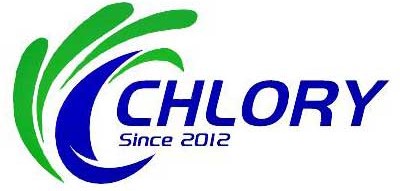Introduction
In the food production process, microbial contamination is one of the important factors affecting food safety and shelf life. Although traditional disinfection methods such as high temperature sterilization and ultraviolet disinfection are effective, they have problems such as high energy consumption, complex operation or residue risks. Hypochlorous Acid Water (HOCl), as an efficient and safe disinfectant, has been widely used in the food production chain in recent years. This article will explore the sterilization mechanism of hypochlorous acid water, its specific application in food production, and analyze its safety measures in combination with the technical advantages of Chlory's hypochlorous acid generator.
Sterilization mechanism of hypochlorous acid water
Hypochlorous acid (HOCl) is a weak acid, but it has a strong oxidizing ability. It can quickly penetrate the cell membrane of microorganisms and destroy their protein and nucleic acid structures, thereby effectively killing bacteria, viruses and fungi. Compared with traditional chlorine-containing disinfectants (such as sodium hypochlorite), hypochlorous acid water has a faster sterilization speed and decomposes into water and trace chlorides after action, without harmful residues, and is more environmentally friendly and safe.
Application of hypochlorous acid water in food production chain
1. Raw material cleaning
During the pretreatment stage of raw materials such as fruits, vegetables, meat, and aquatic products, hypochlorous acid water can be used for soaking or spraying cleaning to effectively remove pathogens attached to the surface (such as Escherichia coli, Salmonella, etc.) without affecting the flavor and color of the food.
2. Disinfection of production equipment and environment
Areas prone to microbial growth, such as food processing equipment, conveyor belts, and workbenches, can be disinfected by spraying or wiping with hypochlorous acid water. Chlory's hypochlorous acid generator can generate high-purity hypochlorous acid water in real time to ensure the continuous cleanliness of the production environment.
3. Disinfection of packaging materials
Food packaging materials (such as plastic pallets, glass bottles, etc.) must be strictly disinfected before filling. Spraying or soaking with hypochlorous acid water can effectively kill microorganisms on the packaging surface without the risk of chemical residues.
4. Disinfection of employees’ hands and tools
Hand hygiene of food processing workers is extremely important. Hypochlorous acid water can be used for hand disinfection, which is less irritating and has a better bactericidal effect than alcohol. In addition, knives, cutting boards and other tools can also be disinfected by soaking in hypochlorous acid water.
Technical advantages of Chlory's hypochlorous acid generator
Chlory focuses on the research and development of hypochlorous acid water generation technology. Its equipment has the following characteristics:
High-purity generation: Using electrolysis technology, hypochlorous acid water with a stable concentration (50-200ppm) is generated in real time with high sterilization efficiency.
Intelligent control: The concentration and pH value can be adjusted according to different application scenarios to ensure safety and effectiveness.
Environmentally friendly and economical: No need to store chemical agents, reducing transportation and storage risks and lowering operating costs.
Wide applicability: suitable for food processing plants, catering industry, cold chain logistics and other links.
Safety measures
Although hypochlorous acid water is relatively safe, the following points should be noted when it is used in food production:
Concentration control: Appropriate concentrations (usually 10-100ppm) should be used for different foods and scenarios to avoid excessive concentrations that affect food quality.
Contact time: Ensure sufficient disinfection time (usually 10-30 seconds) to achieve the best sterilization effect.
Equipment maintenance: Regularly calibrate the Chlory hypochlorous acid generator to ensure its stable operation and accurate output concentration.
Staff training: Operators need to understand the characteristics of hypochlorous acid water and the correct use methods to avoid misoperation.
In conclusion
Hypochlorous acid water has become an indispensable sterilization method in the food production chain due to its high efficiency, safety and environmental protection. Combined with Chlory's advanced hypochlorous acid generator technology, food companies can achieve full microbial control from raw materials to finished products and improve food safety. In the future, with the further optimization of technology, the application of hypochlorous acid water in the food industry will be more extensive and in-depth.
